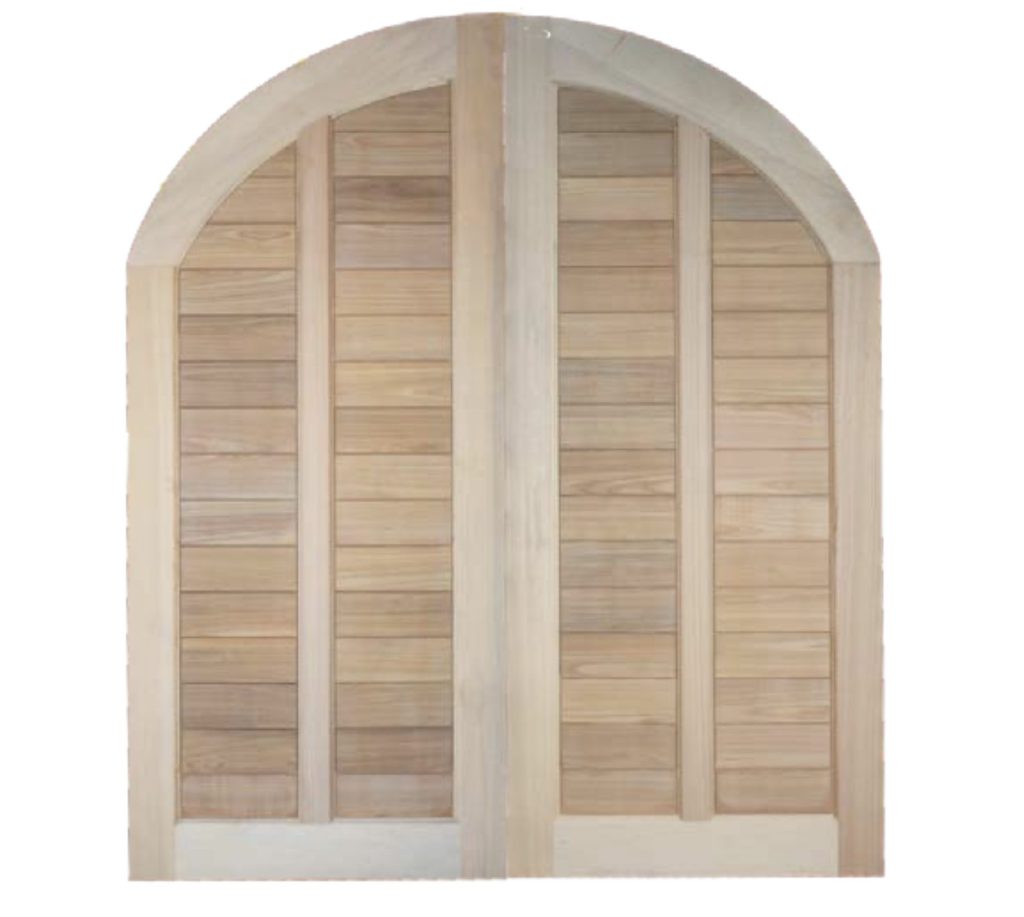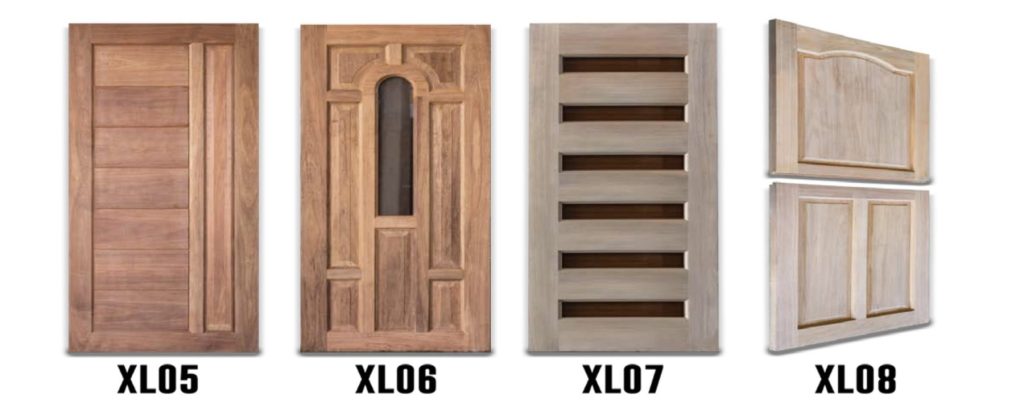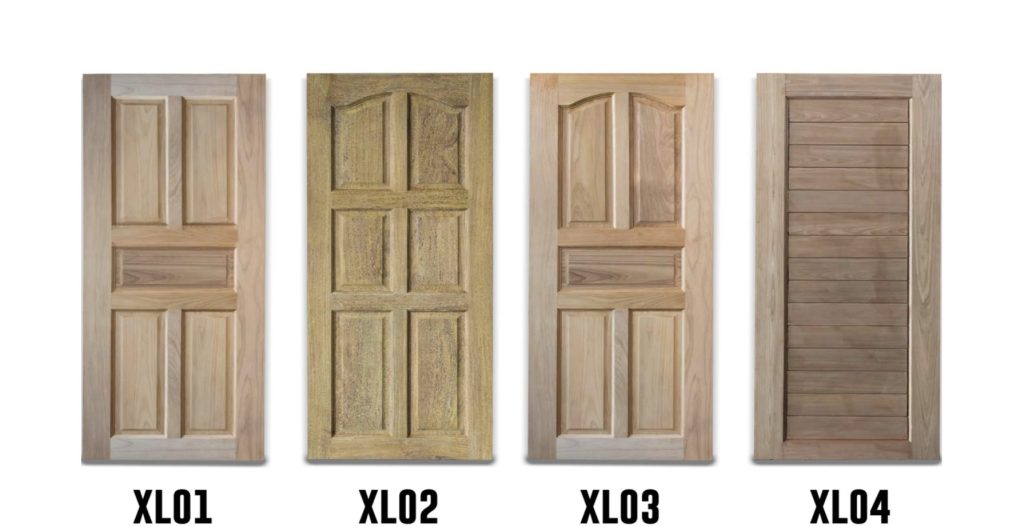Interested in this vacancy? Apply by filling out the form below.
For more information, contact us:
- E-mail: contact@21sawmill.com
- Phone: +597 354893
- Location: Oost-West Verbinding KM21 Tamanredjo, Commewijne, Suriname, South America
Interested in this vacancy? Apply by filling out the form below.
For more information, contact us:
Doors are used as front door, room door, garage door, etc. These are made of various types of wood such as: Basralocus, Ingipipa , Soemaroeba , Yellow kabbes , Cedar. The wood is kiln dried. If the door is used as a front door (outdoor use), it is recommended to give it a protective layer because it is often exposed to the weather.
This can be done by, for example, varnishing it or giving it a desired color. Unless desired, this is not necessary if the door is used indoors, eg as a room door, connecting door, etc., because it is not exposed to the weather. We manufacture doors for interior and exterior uses using tropical hardwood and softwood.




A rabbet is a plank that has a groove at the bottom and a scalloped edge at the top. This allows the rabbet parts to be pushed together. Rabbet parts are usually used for exterior panelling, and are usually applied horizontally.
Rabbet is used for cladding the facade of the house. But the other parts of the house can also be covered with this. Old buildings can also be restored with this. Rabbet is made from Copie , Basralocus, Ingipipa . By giving it a layer of stain, for example, the wood is protected against the weather. This can be repeated over time if necessary.
Depending on the wishes of the customer, rebate can be manufactured in various dimensions. Sizes available in inch: 1x4”, 1x6”
A skirting board is a frame mounted against a wall at floor height, which must form the transition between floor and wall. A skirting board generally protects the wall against damage, but also serves as a decoration for the finishing of the floor and an interior.
As indicated, the skirting board is placed at floor height. Other models can also be used. Skirting board is made of kiln-dried wood such as Copie , Soemaroeba , Ingipipa , Basralocus. This is made with a skirting board machine. The aftercare is done by painting it. This depends on how the interior will look. Skirting board available sizes in centimeters: (2x6,8,10) (1.5x3,4,5,6)
Hardwood flooring is placed on the floor in houses, office buildings, retail premises, etc. These give the place a nice look. We manufacture hardwood flooring from Copi, Basralocus, Ingipipa, Yellow Kabbes.
These are made with rebates, so that they can be easily pushed together. The wood must then be well dried, so that they can fit together as 1 smooth surface. Hardwood flooring is placed both inside and outside (eg terrace).
Aftercare is not difficult because the floor is normally given a glossy layer. This automatically gives the wood a protective layer. Hardwood flooring is made from kiln-dried wood and sizes available in inch: 1x4”, 1x6”
Ceiling laths are placed on the ceiling for a nice look. It is also used for lining wall and partition wall. These are made from Copi, Basralocus, Ingipipa, Yellow Kabbes.
These are placed indoors on the ceiling, so that aftercare is not that difficult. So, it is not exposed to the weather. The wood with which these are manufactured is kiln-dried and sizes available in inch: 1x4”, 1x6”
These are placed in the corner between the ceiling and the wall. It is produced from Ingipipa, Soemaroeba, Basralocus. Corner moldings are only installed indoors.
The aftercare of this is not that difficult, because it is not exposed to the weather. Protective layer can be given by sanding, then painting or sanding. Corner moldings are made of kiln-dried wood in various sizes. Available sizes we offer in centimeters: (2x5x7,8,9.5)
These frames are placed as door frames, window frames and also as ceiling frames. We manufacture moldings of hardwood such as Basralocus and Ingipipa.
The profile frames are placed both inside and outside.
If it is installed indoors, it is recommended to give the profile frame a protective layer, because wood, even when dried, absorbs moisture very slowly. With a protective layer, the product can be enjoyed for a long time to come. Giving a protective layer can be done by sanding it, then painting or varnishing it. If the profile frame is placed indoors, it does not necessarily have to be given a protective layer, because it is not exposed to the weather. Profile frames are manufactured from kiln-dried wood in various dimensions. Available sizes to profile lists, in centimeters: (1x1,2,3,4,5,6) (1.5x1.5,2,3,4,5,6) (2x2,3,4,5,6)
Botanical name: Vatairea
guyanensis
Family: Fabaceae, Leguminosae (Papilionoideae)
Yellow Kabbes (Amarjosa) is bright yellow when freshly sawn, becoming yellow brown to dark brown or red brown. It has clearly demarcated sapwood.
CODE: GKB
Botanical name: Ocotea
Rubra. Knife.
Family: Lauraceae.
S.G. 0.52-0.63
A fairly light and relatively soft type of wood, with grey-brown heartwood and lighter colored sapwood. It wood is strong (class II) and durable (class I-II). The wood is used extensively for all possible purposes and performs excellently. In addition to copy, it is for domestic use and for export a popular type of wood. In the past, Wane was also widely used for making water vessels that had a long life.
CODE: WAN
Botanical name: Eperua
falcata Aubl.
Family: Leguminosae.
S.G. 0.85-0.94
Walaba is a heavy, hard wood with brownish-red heartwood and a lighter colored sapwood. The heartwood contains an oily substance. It is strong (class II) and very durable (class I). Due to its durability, it is excellent for telephone and fence posts, rafters of houses, etc.; Certain varieties split very easily, which wood then used for making webbing for roofing. The oily substance can be removed by running out, which means that it is used a lot in Demerara, among others used for barrel staves. It is also very suitable as parquet. Walaba also supplies excellent firewood and charcoal. It became during the First World War used in Suriname as a raw material for light gas production. In Demerara, British West Indian islands it is used in large quantities as firewood and charcoal.
CODE: WAL
Botanical name: Simaruba
amara Aubl.
Family: Simarubaceae.
S.G. 0.45-0.53
A light, soft yellowish-white wood. Easy to edit. It is not strong (class IV) and not durable (class IV-V). Due to the bitter substance in the wood, it is not so easily attacked by insects, provided it is not in contact with a damp surface. It works and cracks little. It is gladly used for all kinds of musical instruments, matchwood, crates, lighter packing boxes, etc. It is also excellent for making all kinds of utensils.
CODE: SMB
Botanical Name: Loxopterygium Sagotii Hook F.
Family: Anacardiaceae.
S.G. 0.65-0.78
The wood is quite heavy and moderately hard. The sapwood is brown-grey, the heartwood usually contains alternating lighter and darker colored areas, creating a beautiful drawing. The wood is strong (class II) and moderately durable (class II-III). It is mainly for panelling suitable while the beautifully drawn pieces are often used by the furniture industry.
CODE: SLH
Botanical name: Andira
coriacea Pulle.
Family: Leguminosae.
S.G. 0.88-0.99
Red kabbes is a heavy, hard wood with red colored heartwood. It is coarse in grain and free brittle, preventing fall fractures. The wood is strong (class II) and quite durable (class II). For for common construction purposes it is a useful wood, as well as for furniture.
CODE: ROK
Botanical Name: Vochysia
and Qualia Spec.
Family: Vochysiaceae.
The wood belonging to these species is usually rose red to yellowish brown. The main types that belong to this are: • Wane quarie: Vochysia densiflora Warm. S.G. 0.60. • Wiswis-quarie: Qualea Dinzii Duche. S.G. 0.66- 0.70. Of these, the best types of wood are Gronfoloes and Wane kwarie, of which the Gronfoeloe is something better than the Wane Kwarie. In terms of strength, they can be counted as class II-III and durability up to class III-IV. It is suitable for house construction, also for exterior walls, provided that well dried. The other quarie species should be ranked half a class lower, but find despite the fairly frequent occurrence still little application.
CODE: WNW (wane quarie)
WWK (wiswis-kwarie)
Botanical name: Peltogyne
pubescens.
Family: Leguminosae.
S.G. 0.85-1.07
A heavy, hard wood with a reddish-purple heartwood, which gradually fades in the air and light beautiful dark brown hue. The wood is strong (class II) and durable (class II), but is less resistant to wood lice (white ants). The wood is suitable for building houses and for the construction of cars. Because of its beautiful color it is also much sought after as furniture wood and for turning and carving. There are several varieties of Purperhart, of which Lasten is the best known. This one has a less beautiful shine than the real Purple Heart.
CODE: PRH
Botanical Name: Hymenolobium excelsum
Family: Fabaceae
Angelim Pedra is red brown and the sapwood is clearly demarcated. The grain is straight or interlocked and the texture is medium.
CODE: MKB
Botanical name: Hymenaea
Courbaril Linn.
Family: Leguminosae.
S.G. 0.88-0.96
A heavy, hard type of wood with red-brown heartwood and light grey-brown sapwood. The wood is strong (Class I-II) and quite durable (Class II). The wood cracks and works little. It is used for furniture, interior panelling. Due to its low activity it has also proven to be excellent for ship decks, relative to task decks, it has been found to perform better in terms of wear, only in wet conditions condition the deck is smoother. The forest inhabitants also like to use it for making canoes.
CODE: RLO
Botanical name: Piratinera
spec. diff.
Family: Moraceae.
S.G. 0.95-1.33
An exceptionally heavy and hard type of wood. The heartwood is dark reddish brown with irregularly shaped dark spots. There are different types, of which the coarser and the finer speckled species, the so-called Manletterhout, are the most valuable. The heartwood makes only a little part of the trunk. The wide, light colored sapwood is of no value. The wood is very durable and strong. It is mainly due to its beautiful shine and drawing used for luxury items and for fine, expensive furniture.
CODE: LET
Botanical name: Goupia
glabra Aubl.
Family: Celastraceae.
S.G. 0.85-0.94
A heavy, hard wood with red-brown heartwood and lighter colored sapwood. The wood is strong and quite durable. Heartwood and sapwood can both be used. In Suriname, it is the most commonly used type of wood in residential construction, especially for exterior walls. It is also used for furniture. Freshly sawn, the wood has an unpleasant smell, which disappears when the wood is properly dried.
CODE: KOP
Botanical name: Couratari
guianensis
Family: Lecythidaceae
Tauari (Suriname Oak), also known as Ingipipa, is similar to North American Red Oak, but 13% harder. It ranges from tan to medium brown in color, and has a medium graining pattern.
CODE: ING
Botanical Name: Qualea
brevipedicellata Stafl., Q.
paraensis Ducke, Q. homosepala Ducke, Q. acuminata
Spruce ex Warm., Q. lancifolia Ducke.
Family: Vochysiaceae
The heartwood is light grey, yellowish-light beige to brown/reddish brown in colour with light lines of the parenchyma tissue around the vessels. The clear to less clearly distinguishable spider mite has a pale yellow to yellowish color, sometimes to light brown. Sometimes growth rings are visible. In the wood there are locally white ingredients in the barrels, these are visible on the longitudinal surface as thin white lines. The heartwood has a moderate shine dry and no noticeable smell, fresh it has an unpleasant smell.
CODE: HGR
Botanical name: Tabebuia
seratifolia Nickols.
Family: Bignoniaceae.
S.G. 1.00-1.15
It is an exceptionally heavy hard wood with greenbrown heartwood. Considered as one of the most popular tropical hardwood found in South-America also qualifying for the IPE standards. Due to its high durability it is used extensively for outdoor decking, heavy duty flooring as well as bridges and other construction purposes. The wood ranges in colour from yellow-green, golden yellow, yellow-brown to dark-brown.
CODE: GRH
Botanical name: Cedrela
odorata Linn.
Family: Meliaceae.
S.G. 0.42-0.63
A fairly light type of wood with yellowish colored sapwood and reddish-brown heartwood. Due to the presence of essential oil in the wood, it is rarely affected by wood borers when dry, which is why it is often used for cupboards, cigar boxes, etc. working type of wood is requested. Strength class III. Durability class III-IV. Value class III.
CODE: CED
Botanical name: Vouacapoua Aubl.
Family: Leguminosae.
S.G. 0.87-0.97
A heavy, hard type of wood with a dark brown heartwood with fine, light brown lines, making it beautifully drawn.
CODE: BRH
Botanical Name: Manilkara
bidentata (A.D.C.) Chev.
Family: Sapotaceae;
S.G. 0.96-1.09
Very heavy, very hard wood with red-brown heartwood, in freshly cut condition with a lively red flesh color that darkens over time.
CODE: BOL
Botanical Name:
Qualea rosea, Qualea spp.,
Ruizterania spp.
Family: Vochysiaceae
Mondio is pinkish brown to red brown, sometimes olive brown. The wood contains a white substance in the pores. It has clearly demarcated sapwood.
CODE: BGR
Botanical name: Dicorynia
paraensis Bth.
Family: Laguminosae.
S.G. 0.7-0.95
A heavy, fairly hard wood with gray colored spider mite and brown-gray
heartwood. The wood shows variations in density, fineness of grain and color. The wood is strong (class II) and durable (class I-II).
It is best known for its resistance to pileworm infestation, due to the content of pebble bodies in the wood. The wood is primarily used as piles for hydraulic engineering purposes, but finds general application for other construction purposes. It is also suitable as staves for special vessels.
CODE: BAS